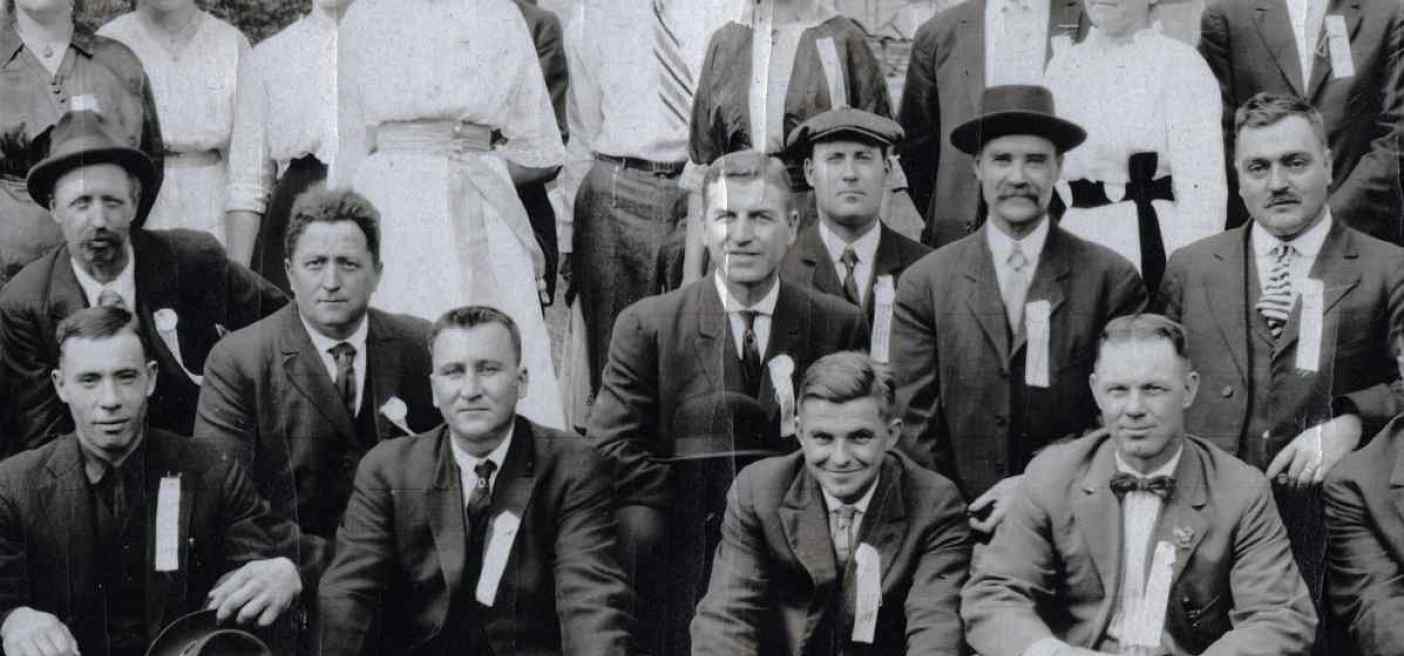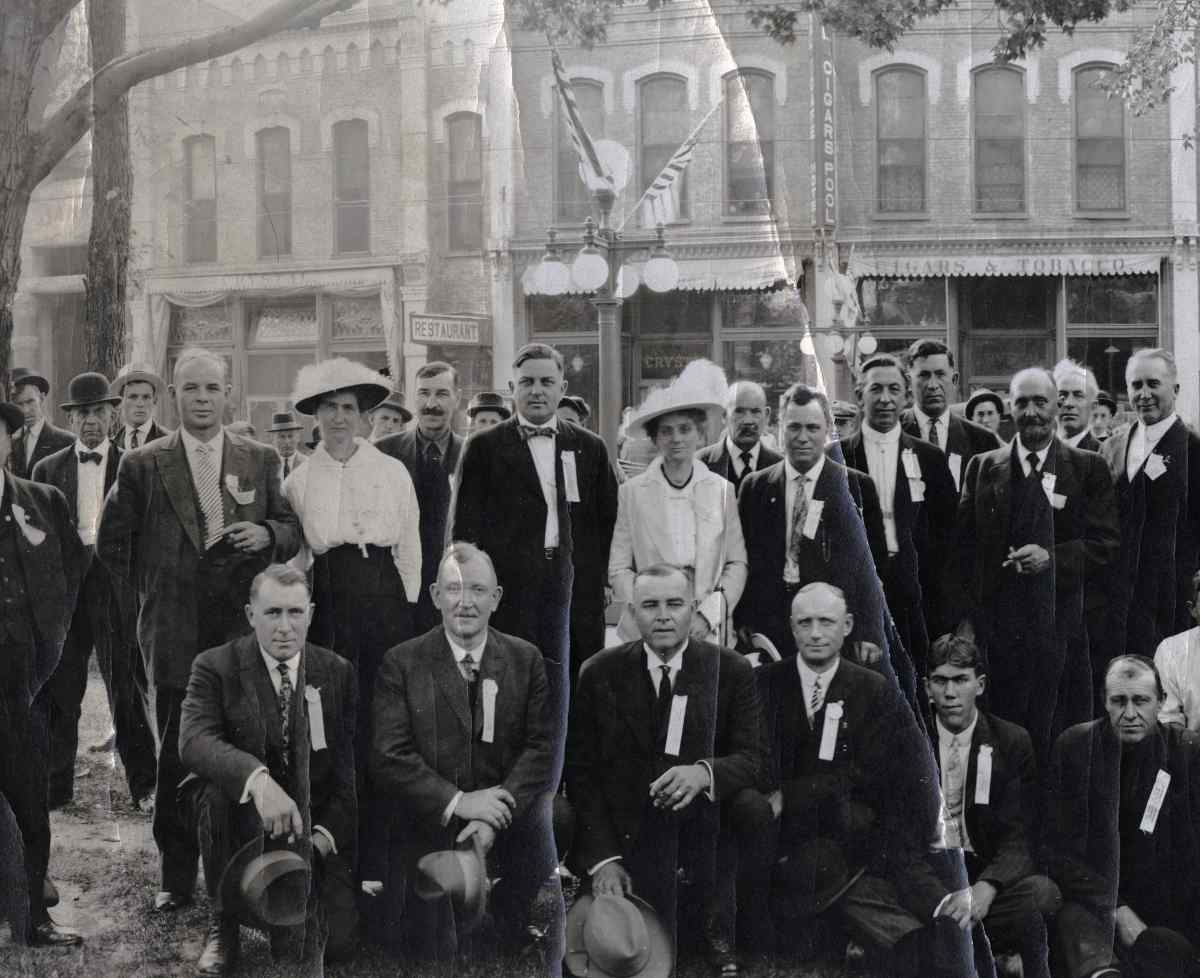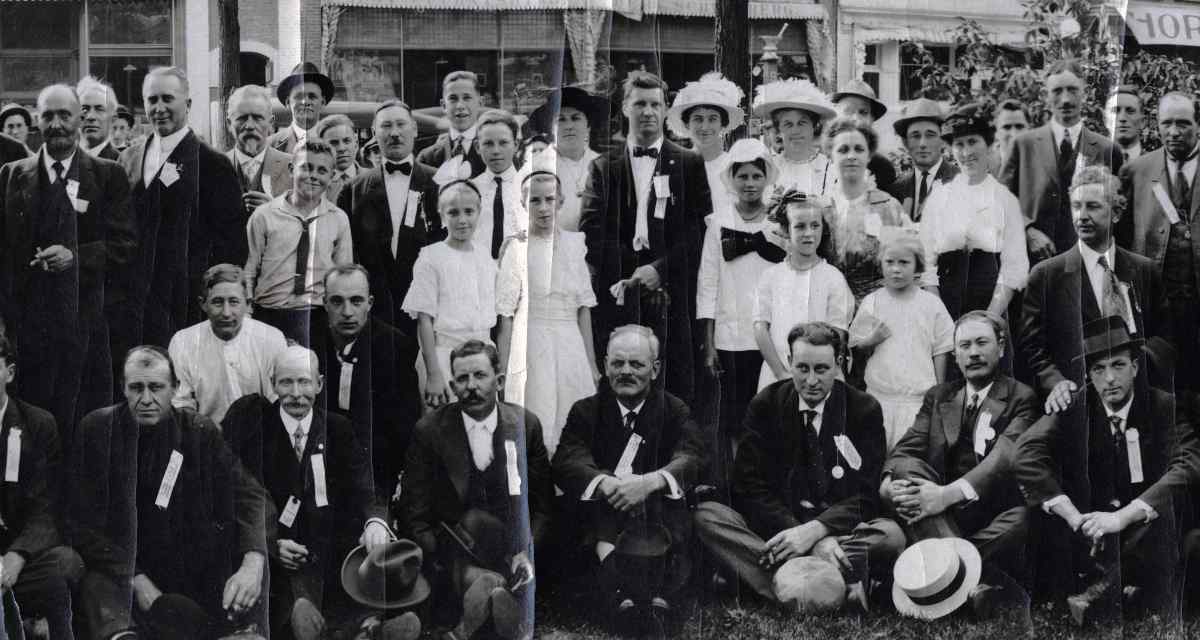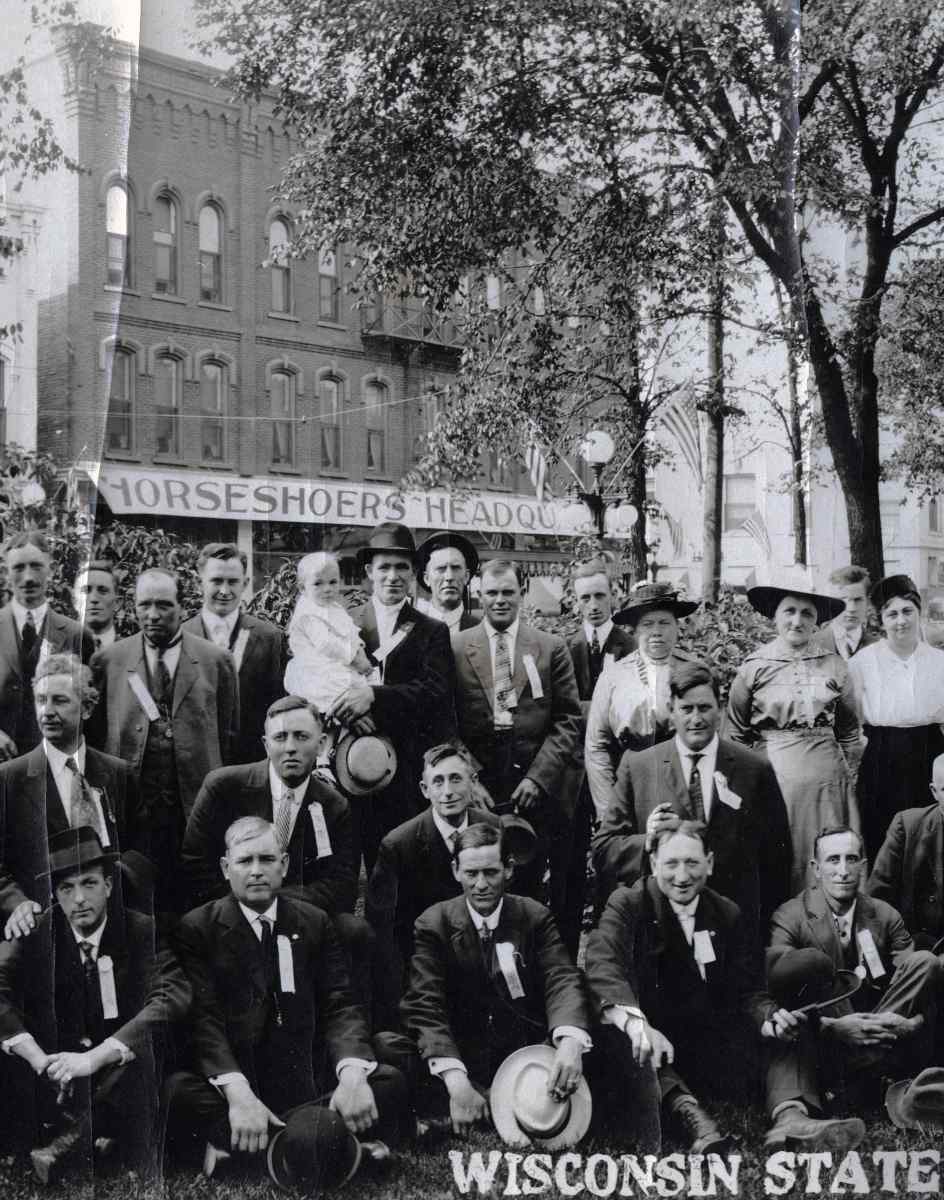The Master Horseshoers Convention of 1915

The Convention of the Master Horseshoers
This panoramic picture from the MCHS photo collection, and it shows a congregation of around 150 people on the Marathon County courthouse grounds in Wausau. This was the 13th annual convention of Wisconsin's Master Horseshoers Association members.

^ The front page of the Wausau Daily Herald covering the convention of the Master Horseshoers
These horseshoers were the specialized blacksmiths who created horseshoes and attached them to horses (as opposed to being enthusiasts of the game of horseshoes), and this gathering in Wausau provides an interesting look into their profession.
The Labor Union for Horseshoers
The Master Horseshoers Protection Association of America is one of the oldest labor unions in the United States. It was first established in Philadelphia, PA in 1874, and from there the protective association expanded. At a gathering of horseshoers in Milwaukee in 1884, led to the creation of the Wisconsin branch of the organization. And over the next decade, further chapters were established across the State.

^This scan of the panoramic photo was made after a slow process of humidifying and pressing flat the print after it was stored rolled up for decades. There are still cracks that did not quite lay flat on the scanner, leaving these verticle lines.
Although the Marathon County chapter of the MHPAA took a bit longer to be formed, a number of Wausau-based horseshoers would become prominent leaders within the State-wide organization. And the Wausau branch would host conventions here in 1915, 1928 and 1940. And C.N. Dehlinger and Herman G. Achterberg would both serve as president of the Wisconsin chapter in the 1910s and 1920s.

^ The shop of Herman Achterberg was one of Wausau's more prominent blacksmiths and horseshoers of the 1910s.
This kind of protectionist union up to this point were typically limited to different kinds of professions, especially in places like Marathon County with a smaller urban workforce. At the same week the Horseshoers were meeting in Wausau that September, there was a Labor Day parade held in town that featured the following unions:
- Band (musicians)
- Brewery workers
- Retail clerks
- Cigar makers
- Stage workers
- Bartenders
- Painters
- Bricklayers & Masons
- Barbers
- Granite Workers
These were generally professions with specialized training, not available to your average, run-of-the-mill laborers. And this training often included a formalized master-apprentice system.

^ By the 1910s, it was apparently expected the the horseshoers would be bring their wives to the convention. August Unruh, president of Wisconsin's MHPAA association, noted in his speach at the 1915 convention noted that "it is now practically necessary for each horeshoer to bring his wife, or else a black mark will be made against him."
The Master Horseshoers association sometimes provided an outlet for resolving tensions between Journeymen workers and the Masters that typically employed them. But because these trades also usually operated as independant contractors, the protection association was generally not meant to protect workers from a contentious relationship with their employers in the same way other efforts to organize workers at paper mills or wood window sash companies are often framed. Instead, the association was mostly organized to help local horseshoers cooperate to protect the trade from interlopers.
They agreed to use uniform prices for their services, which kept its members from competing against each other by cutting prices—which ultimately hurt the livelihoods of the workers employ. They also started “black lists” to make it clear who was not part of the association, "to protect members from impoisiton and fraud."

^ This photo was taken by the prominent local photographer, W.I. LaCerte. In addition to capturing the event for poserity, he also took part in other ways. Over the course of the convention, LaCerte was apparently one of several locals who provided entertainment for the visitors. An account of the many musical performances mentioned LaCerte himself performed the songs, "I Love You Truely," "Elaine," and "When I was a Dreamer."
But as more and more people were traveling by automobile in the new century, the demand for these specialized smiths who shoed horses was on the decline.
In his 1915 speech before the Wisconsin horseshoers gathered in Wausau, Bernard Koelzer, president of the National MHPAA, acknowledged this reality. After praising the hospitality of the host city (and complimenting their “work for Wausau” spirit), Koelzer was said to have noted "…the horseshoers’ business was not as prosperous as it once was, but all are kept busy and are needed in their respective communities to help develop that part of the country.” And this statement certainly spoke to the uncertain reality of the horseshoers at the time: they were being made obsolete, but were still of vital importance to the communities.
The transition to adopt horse-less carriages would be surprisingly rapid in the United States, but it did not happen overnight. Gas and service stations would need to be built, roads needed to be paved, and garages to house cars needed to gradually replace carriage houses. And in the meantime, hundreds of thousands of horses would need shoeing by someone.
A short time after these horseshoers gathered in Wausau for the convention, the horeshoeing trade was all but obsolete. Most horseshoers had moved on to other regions or retired by the end of the 1940s. Those who kept up the old ways, did so for smaller and smaller numbers of farmers, hobbiests, and racing horses.

But at the time this picture was taken at the convention of 1915, this was still undecided and in the future. And for the moment, these horseshoers and their families spent a few happy days enjoying the Wausau area.

